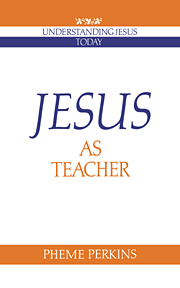4 - Adaptation of Jesus' Teaching in the Community
Published online by Cambridge University Press: 07 January 2010
Summary
Disciples of a famous teacher expanded and interpreted their master's teaching to answer questions that arose after the master's death or to explicate unclear teaching. The lives of famous teachers were expected to reflect their doctrines. Combining episodes from a teacher's life with samples of teaching provided an effective way of passing on the views of a particular group. Frequently, biographies of famous people were framed to bring out the lessons that one could learn from the individual's life.
Scholars disagree over whether or not the Gospels should be considered biographies of Jesus, but they do agree that episodes from Jesus' life have been used to illustrate his teachings. The evangelists have also put together traditions that they inherited about Jesus in larger units, which provide interpretations for the individual sayings or stories. Sometimes when a saying or story occurs in more than one gospel it is easy to see that each writer has handled the material differently. Since early Christians believed Jesus to be the Son of man, exalted at God's right hand and coming to judge the world, an evangelist may substitute “I” for the phrase “Son of man” in a saying (e.g., Mt 16:21; contrast Mk 8:31 and Lk 9:32). We noted in the preceding chapter that Mark arranges sayings about the end of the world in Chapter 13, so that Christians will not mistake the destruction of Jerusalem as a sign of the end of the world.
- Type
- Chapter
- Information
- Jesus as Teacher , pp. 62 - 84Publisher: Cambridge University PressPrint publication year: 1990



